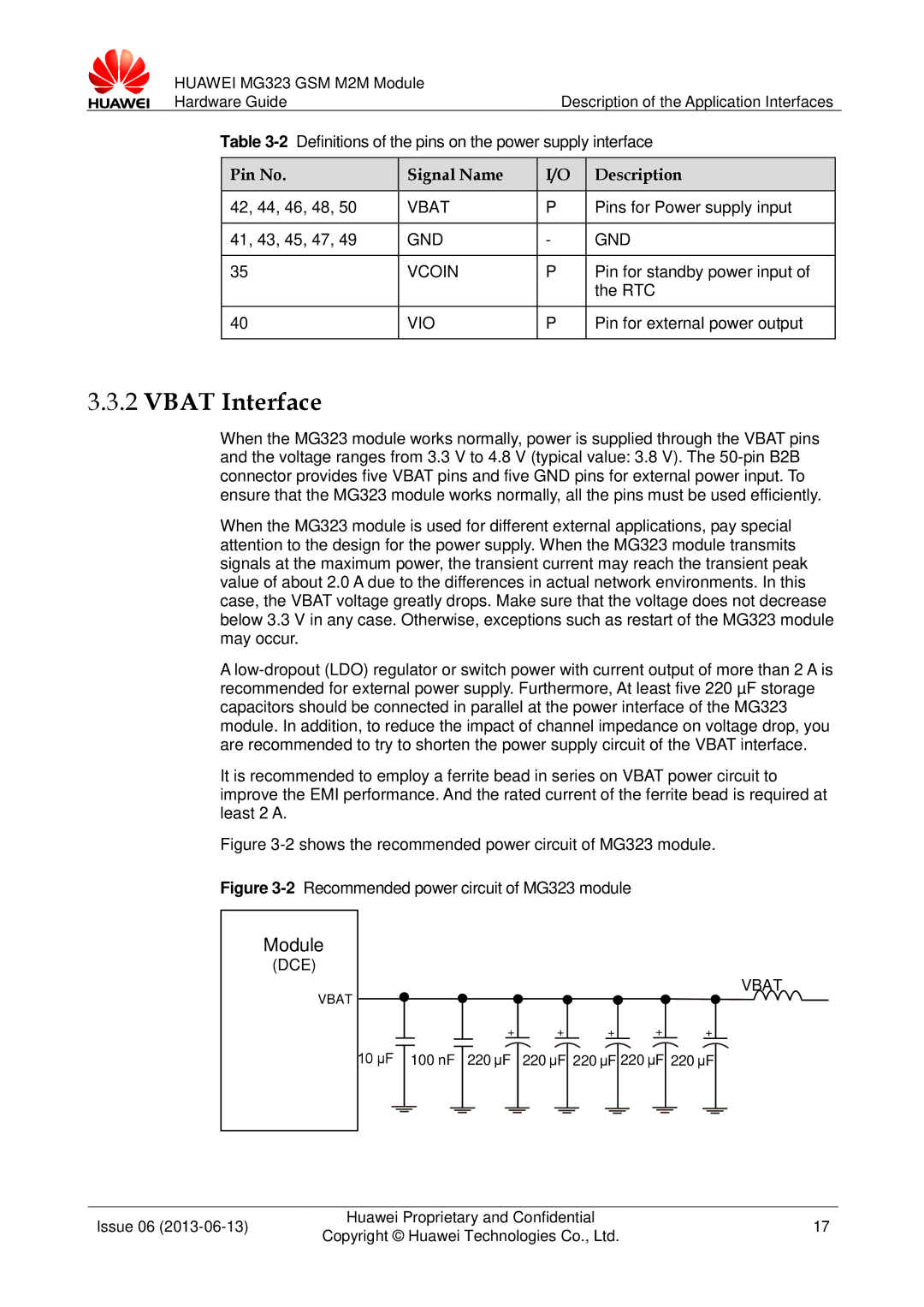
HUAWEI MG323 GSM M2M Module |
|
|
| ||
Hardware Guide |
| Description of the Application Interfaces | |||
Table | |||||
|
|
|
|
|
|
| Pin No. | Signal Name | I/O | Description |
|
|
|
|
|
|
|
| 42, 44, 46, 48, 50 | VBAT | P | Pins for Power supply input |
|
|
|
|
|
|
|
| 41, 43, 45, 47, 49 | GND | - | GND |
|
|
|
|
|
|
|
| 35 | VCOIN | P | Pin for standby power input of |
|
|
|
|
| the RTC |
|
|
|
|
|
|
|
| 40 | VIO | P | Pin for external power output |
|
|
|
|
|
|
|
3.3.2VBAT Interface
When the MG323 module works normally, power is supplied through the VBAT pins and the voltage ranges from 3.3 V to 4.8 V (typical value: 3.8 V). The
When the MG323 module is used for different external applications, pay special attention to the design for the power supply. When the MG323 module transmits signals at the maximum power, the transient current may reach the transient peak value of about 2.0 A due to the differences in actual network environments. In this case, the VBAT voltage greatly drops. Make sure that the voltage does not decrease below 3.3 V in any case. Otherwise, exceptions such as restart of the MG323 module may occur.
A
It is recommended to employ a ferrite bead in series on VBAT power circuit to improve the EMI performance. And the rated current of the ferrite bead is required at least 2 A.
Figure 3-2 shows the recommended power circuit of MG323 module.
Figure 3-2 Recommended power circuit of MG323 module
Module
(DCE)
VBAT
10 μF 100 nF
VBAT 
+ | + | + | + | + |
220 μF 220 μF 220 μF 220 μF 220 μF
Issue 06 | Huawei Proprietary and Confidential | 17 | |
Copyright © Huawei Technologies Co., Ltd. | |||
|
|
